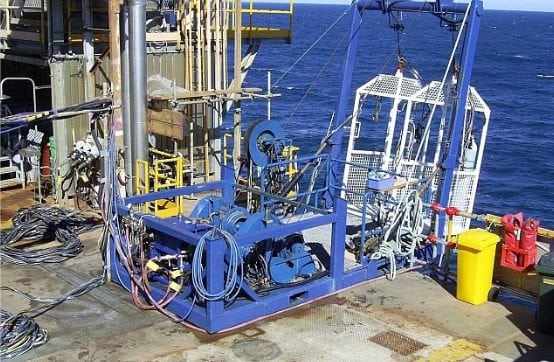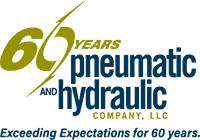Maintaining Hydraulics in an Offshore Environment
Launch and recovery systems (LARS) provide reliable and fully controllable deployment, operation and recovery of a wide scope of equipment – from small sonar and oceanographic systems to large work class ROVs. These systems are used around the globe in various applications. They are used to inspect subsea components of offshore oil rigs, they are used in research fields as well as underwater expeditions such as Robert Ballard’s search for the sunken Titanic. None of these applications would be possible without the correct and efficient application of hydraulic power. The entire movement of the LARS is actuated by hydraulic power. The performance of the hydraulic power unit and hydraulic cylinders is key in the efficiency of the LARS.
 LARS comprise of the following:
LARS comprise of the following:
- Umbilical winch usually fitted with a level wind mechanism
- Slip ring with sufficient passes for transmission of power and data
- “A” Frame or Crane mechanism for lifting and deployment of the ROV overboard powered by hydraulics
- Sheave wheel for free movement of the umbilical cable with or without an optional lock latch or snubber rotator mechanism
- Hydraulic Power Unit (HPU) that provides hydraulic power to the winch, “A” frame and lock latch mechanism
- Skid tie down plates for welding to the deck
There are several types of LARS. They can be designed as portable systems, compact fixed systems or as fully integrated winch and handling systems. Docking mechanisms and turntable designs can be supplied in a range of standard designs or tailor-made to suit the requirements of the application. The A-frame can be mounted on a single skid or as separate units as preferred. Regardless of their configuration, the one thing they all have in common is hydraulics.
Due to the harsh saltwater environment, LARS are exposed to it is important to regularly check the hydraulic cylinders used in these systems for faulty performance and repair as needed to ensure optimal performance. It is a fairly common occurrence to find pitting on hydraulic cylinders or shafts which is when oxidation is abated with epoxy coatings and nonferrous metals causing rust. In these LARS operations, this is typically caused by corrosion from the salt water exposure. The lip seals on the shaft of a hydraulic cylinder need to have a smooth surface or the hydraulic fluids will leak out causing a reduction in performance and, in marine operations, hydraulic fluids can leak into the ocean.
Pneumatic and Hydraulic Company contracts service companies to coordinate hydraulic repairs for our customers. Some of the largest integrated marine service companies in the world trust in PHC to keep their hydraulic cylinders at peak performance to prevent any downtime during projects and operations. Our factory-trained and certified in-house repair teams can work on any size equipment including hydraulic cylinders, pumps, valves and more to ensure the success of all subsea projects.
For more information about how Pneumatic and Hydraulic Company can help your company save time and money on projects by providing top-notch hydraulic testing, maintenance, and repair, please contact our hydraulic specialists today.
